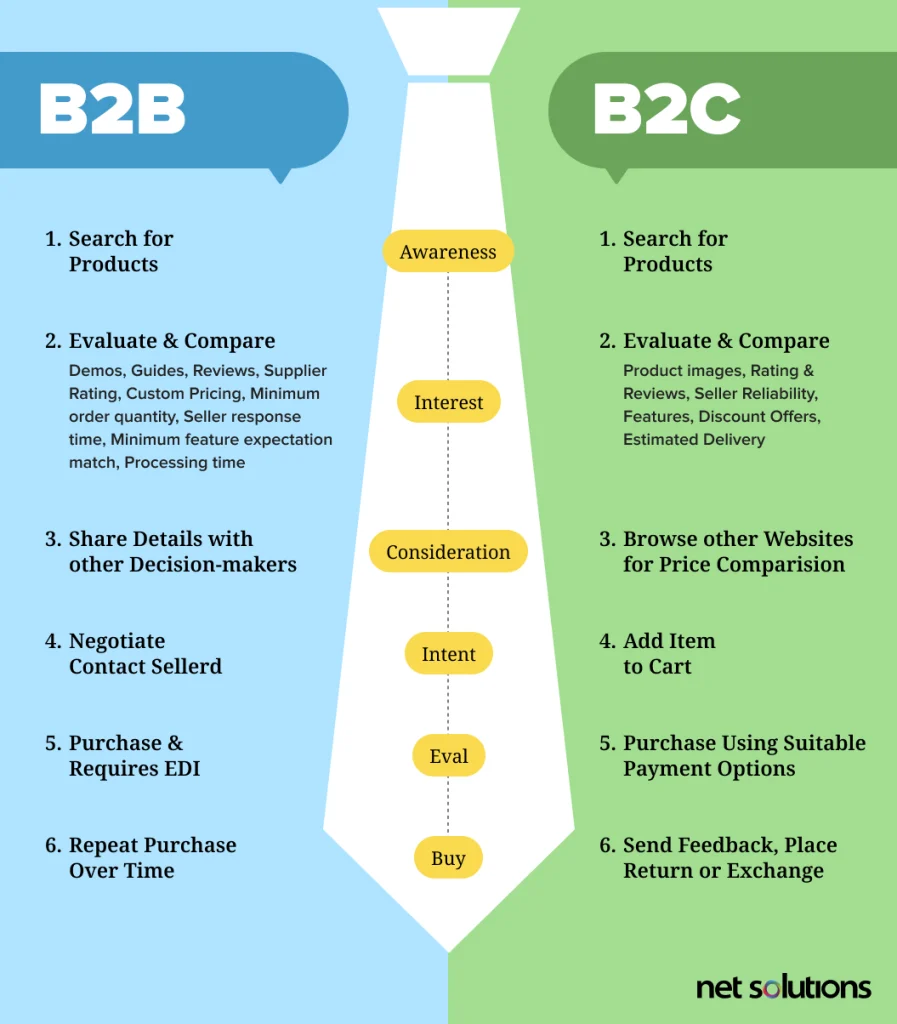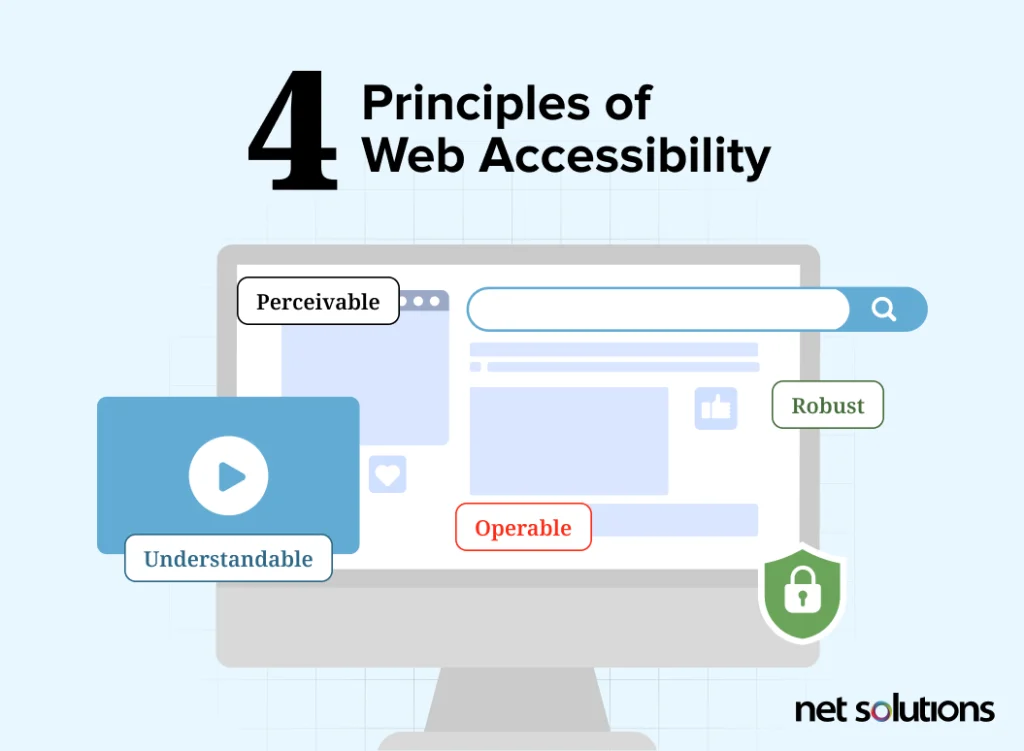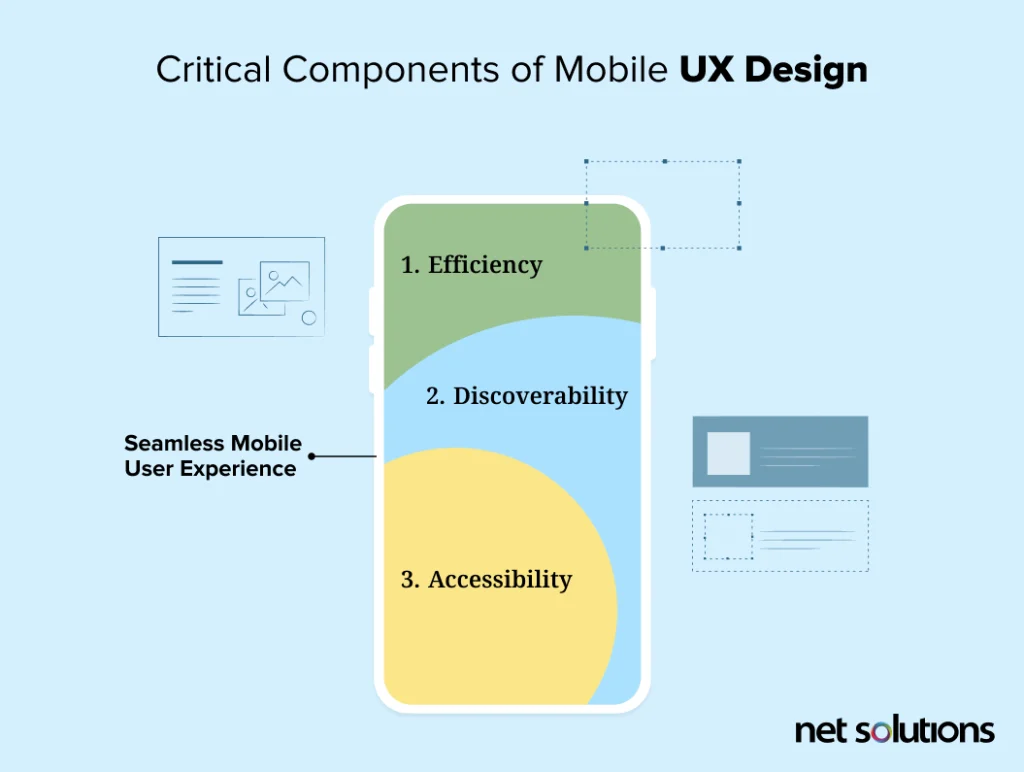In the past, B2B mobile eCommerce was focused on responsible web design to make mobile browsing easier. In 2024, B2B (business-to-business) buying experience is now “channel-agnostic,” with buyers seeking information from an average of 10 channels including email, phone, marketplaces, mobile app, online chat, portals, social media and more. This creates new expectations for B2B mobile eCommerce to include omnichannel personalization, streamlined navigation, mobile apps, self-service capabilities and more.
This guide will help B2B eCommerce managers, sales reps and marketing directors understand the changing expectations for mobile-first B2B experiences to help attract, convert, and retain customer relationships over time. Key Takeaways:- The role of mobile in B2B eCommerce is growing
- B2B mobile eCommerce is not just about mobile-optimizing a website
- Meeting buyer expectations is essential to stay competitive
- Your eCommerce platform can make or break your mobile eCommerce strategy
- What key features you should incorporate into your B2B mobile eCommerce strategy
If you’re ready to empower your B2B buyers with a superior experience, Net Solutions eCommerce Development Services can help make that possible – from design to development and beyond.
What Is B2B Mobile eCommerce?
B2B eCommerce is currently the most effective sales channel, rated first by 35% of buyers. B2B Mobile eCommerce is the process of buying or selling through mobile devices.
Today, B2B eCommerce trends have shifted, expanding our definition of B2B mobile eCommerce to encompass the reality of omnichannel buyer behavior, with purchasers moving on their mobile device between social media posts to marketplaces to websites to mobile apps, expecting a seamless experience across channels.
B2B Mobile eCommerce includes creating a strategy that includes the following digital channels, each of which may be accessed on a mobile device:
- Website built with responsive web design
- A progressive web app (PWA)
- Mobile app(s), taking into account the native vs hybrid vs cross platform decision
- Online chat
- Online portals (self-service)
- Text/SMS
- Social media
- Messaging apps
- Online communities
- Video chat
As B2B mobile eCommerce diversifies, it’s important that B2B businesses re-examine if their current platform can keep pace. Many B2B brands have had to replatform from a legacy platform to a more modern headless B2B eCommerce or composable commerce B2B platform. For more on this, read our posts on B2B eCommerce replatforming and the Top 12 B2B eCommerce Platforms for 2024.
What Are the Differences Between B2C and B2B Mobile eCommerce?
Business-to-business (B2B) eCommerce refers to the online selling of products, software or services to another business, while a business-to-consumer (B2C) eCommerce is the selling of products, software or services directly to consumers. B2B sellers include suppliers, wholesalers, distributors, service-based businesses or software-as-a-service (SaaS) providers.

B2C mobile eCommerce
- Target Audience & Buying Behavior: Targets individual consumers using their mobile devices to make individual or small value purchases, which makes up over half of all retail eCommerce sales and anticipated to reach 63% by 2028.
- Order Value & Frequency: Focus on high volume, low cost products or services at a fixed price
- Features & Functionality: Deep personalization in shopping experiences using GenAI, Conversational commerce using chat and voice interfaces
- User Interface (UI) & Design: Focused on optimized user experience (UX) design, mobile and one-click checkout experiences, heavily influenced by eCommerce trends.
- Marketing & Customer Journey: Need to create omnichannel customer experiences that span seamlessly across channels and in-store. Buyers are influenced by emotion, lifestyle, and competing products.
B2B mobile eCommerce
- Target Audience & Buying Behavior: Appeals to a smaller pool of buyers. Often involves multiple stakeholders in a more protracted buying process where mobile devices are used at home or at work to gather information or interact with brands. Buying can be purchased by fear response, since buyers have their professional reputation on the line.
- Order Value & Frequency: Depending on the business model of the seller, this can be high value, infrequent purchases or more regular purchase behavior. High need for variable pricing and catalogs.
- Features & Functionality: B2B buyer workflows around quoting, invoicing, bulk orders, order approvals, account roles, flexible payment options. Significant need for strong self-service capabilities.
- User Interface (UI) & Design: Creating a seamless user experience with advanced or intelligent search, product sorting, personalized experiences, clear mobile navigation, transparent pricing, shipping.
- Marketing & Customer Journey: Buyers are looking to solve a business problem, with protracted sales cycles that involve a high level of research, prompting the need for deep product information and thought leadership. Heavily influenced by B2C trends such as the need for omnichannel experiences across channels, including B2B marketplaces and social media.
Read more on the differences between B2B and B2C websites and how to choose the right B2B eCommerce platform.
What Are the Advantages of B2B Mobile eCommerce?
The benefits of B2B eCommerce roll into mobile eCommerce, helping brands maintain a competitive edge, enhance the customer experience across the customer lifecycle, and open up new opportunities to scale and grow. With 60% of B2B buyers indicating in 2017 that mobile played a significant role in a recent purchase, we would not be surprised to see that today over 90%.
The benefits specifically of investing in mobile eCommerce, through more responsive web design or a B2B eCommerce mobile app, include:
- Performance: Optimizing performance for mobile users through more responsive web design or a native app (the best performance) helps your site load faster, which is particularly important for B2B businesses with large numbers of SKUs or images.
- Advanced features: For mobile apps in particular, there is the opportunity to leverage features of the mobile OS to make apps more intuitive and interactive. This is particularly important for product sorting, for checkout optimization, and for self-service portals.
- Competitive edge: Investing in mobile features can give you a competitive edge, making it easier for customers to find information, support repeat purchases, or connect with you.
- Accessibility: While mobile optimization can ensure accessibility on mobile devices, a native mobile app offers the ability to be used offline, which can come in handy for buyers who are purchasing in the field with poor wireless access.
- Easy checkout: 83% of B2B buyers will abandon a purchase if payment terms are not clear, and 39% say checkouts need to be faster and simpler. Mobile apps make it easier to navigate to and complete a checkout in record time or to leverage built-in shopping lists or quick reorder features of a self-service portal.
- Support queries: With a mobile app, you can make it easier to respond to inbound leads or address customer service requests using advanced chatbots and messaging.
What Are the Challenges of B2B Mobile eCommerce?
Although the benefits have been clear, there are often some challenges in growing B2B mobile eCommerce:
- Legacy eCommerce platforms: Some eCommerce platforms lack the features to support multiple channels, multiple storefronts (e.g. a mobile app) or to offer the advanced features necessary to streamline and personalize experiences. This is often a hint that it’s time to replatform.
- Inventory management: Selling in-person, on the web and potentially in a mobile app or other channel requires a way to manage inventory in real time across channels and storefronts, which can be a challenge with legacy systems.
- Lack of resources: A lack of skilled or experienced B2B developers, or a lack of funding, can make it difficult or risky to invest in mobile. A skilled eCommerce development partner can help in the short and long-term success of your B2B mobile strategy.
Best Practices for Building Your B2B Mobile Commerce Strategy
It’s clear that more B2B buyers are using their mobile devices to gather information and make purchases from your eCommerce business, so creating an easy-to-use, mobile-optimized website or a mobile app can help deliver the features and performance that buyers are seeking. Consider the following best practices in your mobile B2B eCommerce strategy:
Assess your eCommerce platform
It is important to create a seamless mobile experience all in one place – no jumping from a website to a buying portal or having to zoom in to see product descriptions. Delivering the functionality and performance that customers want will require you to assess if your digital commerce platform has all the features you need to deliver a mobile-optimized website or mobile app, including:
- Self-service buyer portal with mobile-optimized design to manage shopping lists, reorders, view past orders, add users and more
- Multi-store support for web, mobile, segments, verticals, languages or more
- Personalization features (pricing, search, discounting, catalogs)
- Mobile-optimized frontend and/or headless or composable commerce architecture to allow for differentiated frontend channel experiences
- Real-time inventory updates across channels
- Analytics and business intelligence
- Mobile-optimized search and navigation, with forward-looking capabilities in AI
- Workflow automations that work with mobile (pop-ups or SMS) such as shopping cart reminders, upsells, and cross-sell opportunities
Accessibility

eCommerce accessibility is the process of ensuring the website or app is:
- Perceivable: it can be accessed by anyone (e.g. ensure screen readers have ‘alt tag’ information, ensuring the design is optimized for low vision or color blind viewers)
- Operable: that everyone can use the website, with clean mobile-optimized navigation features, advanced product filtering support, voice commerce capabilities, easy navigation of any media. For brands that sell across markets, this ensures the website detects the appropriate language, currency and shipping options by default.
- Understandable: that text is easy to read and the site is easy to navigate. The design of the website or app should be responsive if scaled, ensuring it is still navigable for those who have increased text sizes on their phones.
- Robust: that the eCommerce site operates well across browsers, platforms and devices. Performance here is driving the creation of native apps, which offer more accessibility features, including those recently announced for iOS.
Clean UI and seamless UX
Your eCommerce store website or app should follow best practices in mobile UX design (a function of your eCommerce platform + design), ensuring it is optimized for accessibility, efficiency and discoverability. While we’ve covered accessibility above, the other two pillars of mobile UX design ensure that users can find what they’re looking for and can interact with the website or app easily and quickly.

Consider how the following impact your design:
- Images & media
- Keyboard accessibility
- Use of colors
- Use of fonts
- Website navigation
- Content structure & semantics
- Screen reader compatibility
Flexible payment systems
In addition to the need for more advanced capabilities pre-order (e.g. quotes), variable pricing capabilities, your B2B mobile eCommerce strategy should include the following to support the ordering process:
- Payment methods your platform supports (check, bank transfers, electronic fund transfers, credit cards, virtual cards)
- The processing costs on your platform
- Providing transaction visibility to buyers
- Transparency for final price before purchase (including tax, shipping, customs for global brands)
- Automations for validation, approvals, payments, reconciliation
- Subscription pricing (if relevant, e.g. software)
- Self-service capabilities
- Integrations with existing systems (accounting, ERP)
Client feedback and testimonials
A business relies on how well it attracts, converts and retains clients and the lifetime value of those clients. To encourage sales and customer loyalty, businesses must have a way to both gather feedback to continually improve, to address negative feedback quickly, and also to push positive feedback into social proof through case studies, review ratings, testimonials and even analyst reports to help encourage purchasing decisions.
In a mobile context, this includes ensuring social proof is incorporated into product pages, including ways for buyers to give feedback (through your CRM processes post-sale and on-site), incorporating chatbots, or including more interactive elements on-site to gather feedback about what buyers are looking for in their information gathering stage. If your mobile strategy extends to other channels (social media, messenger, marketplaces, etc), ensure you have engagement tools across all channels.
Engaging visuals
Visual content can convey more than words, in some cases. For products that solve complex business problems, diagrams, infographics and videos can help convert customers. For products, images make it easier to navigate. Wherever possible, consider how visuals can aid in simplifying the mobile experience.
Don’t forget accessibility! Make sure all your images have alt text and that videos have adequate descriptions (bonus, this is also great for SEO).
B2B mobile marketing
When designing your B2B mobile eCommerce strategy, B2B marketing is also a mobile concern. Start with understanding your mobile audience and the different stages of your buying cycle, helping create marketing strategies that can include:
- SMS: Leverage SMS for push notifications including cart reminders, promotions, inventory restock alerts and other curated marketing messages.
- Email: Make sure all your email marketing is mobile-optimized (your eCommerce solution or CRM platform should do this).
- Social media: Curate a business profile and include social media marketing to target buyers where they spend a great deal of time. Ensure you have fast response time on messages or comments.
- Ads: ensure that all the ads you run are also mobile-optimized (LinkedIn, GoogleAds, etc)
- In-app: Use in-app promotions based on customer, segment, buying history, or navigation to curate in-app ads or promotions
It’s Your Turn Now
At least 90% of buyers will repeat a purchase from a B2B seller with a superior mobile experience, so investing in B2B mobile eCommerce can have significant returns. If your B2B company is looking to replatform to a new eCommerce platform to optimize your B2B operations and scale your business, to make your B2B website mobile-optimized, or want to take advantage of all the benefits of a new eCommerce mobile app for your business, we can help.
Net Solutions has helped create award-winning B2B mobile experiences for B2B customers including a Euro Car Parts, Bonds of London and a leading airline.
Reshape your business for growth with our eCommerce development services.
SHARE THIS POST
Table of Contents
Related Resources
- AI in B2B eCommerce: Everything You Need to Know
- Top 14 B2B eCommerce Benefits in 2024
- The B2B eCommerce Catalog: Everything You Need to Know
- The Biggest B2B eCommerce Challenges (And How to Address Them)
- The Ultimate Guide to B2B Fashion eCommerce: Strategies, Trends, and Solutions
- 18 Must-Have B2B eCommerce Features To Look For in 2024
- Headless B2B eCommerce - How to Redefine Your Business
- B2B eCommerce Marketplaces: Your In-Depth Guide
- Top B2B eCommerce Metrics to Track for Success [2024]
- Why Your Business Needs a B2B eCommerce Mobile App
- 11 Top B2B eCommerce Open Source Platforms for 2024 [With Real Reviews]
- B2B eCommerce Platform Costs: A Comprehensive Guide (2024)
- 12 Top B2B eCommerce Platforms for 2024 [With Real Reviews]
- B2B eCommerce Pricing Strategies: An In-Depth Guide
- Your In-Depth Guide to B2B eCommerce Replatforming
- Top 9 B2B eCommerce Trends to Watch in 2024
- B2B eCommerce UX: A Comprehensive Guide
- A Step-by-step Guide to B2B eCommerce Website Development
- 9 of the Best B2B eCommerce Website Examples in 2024

